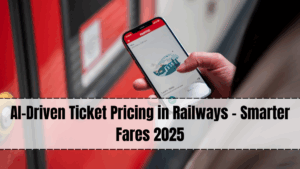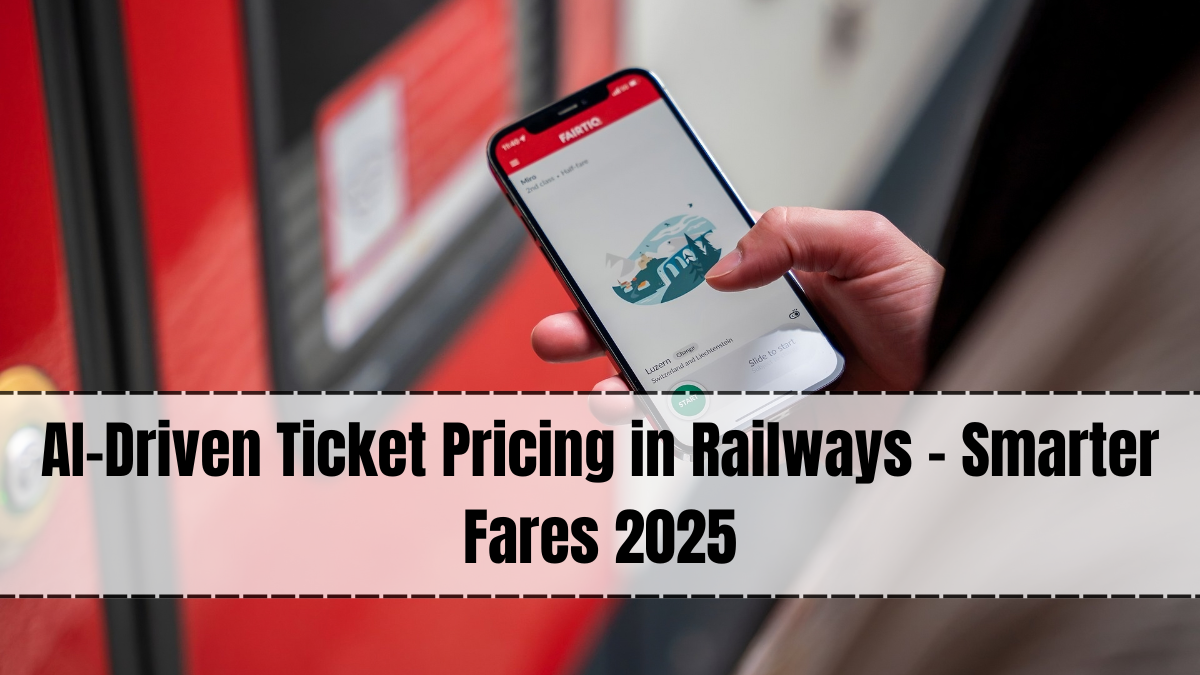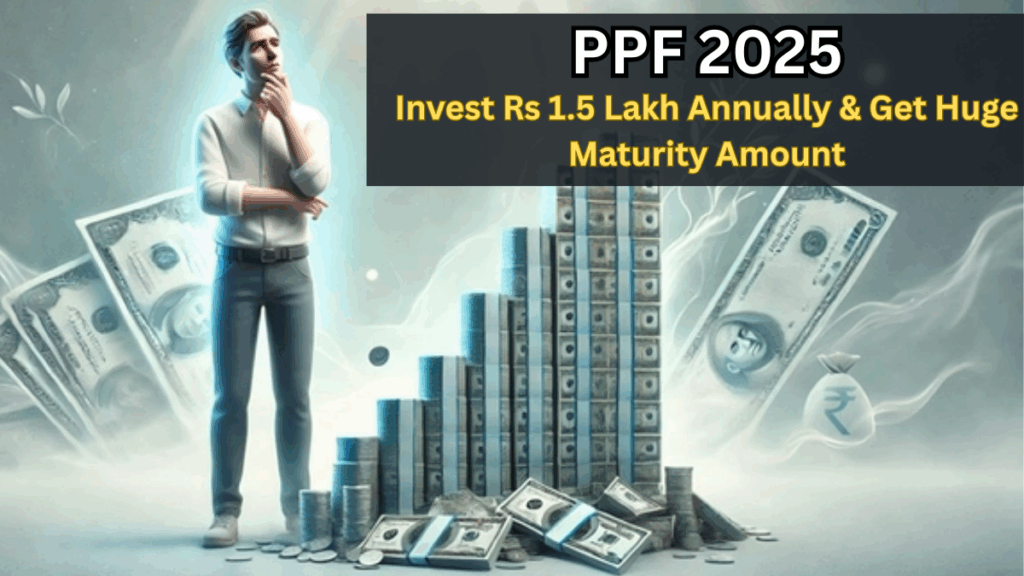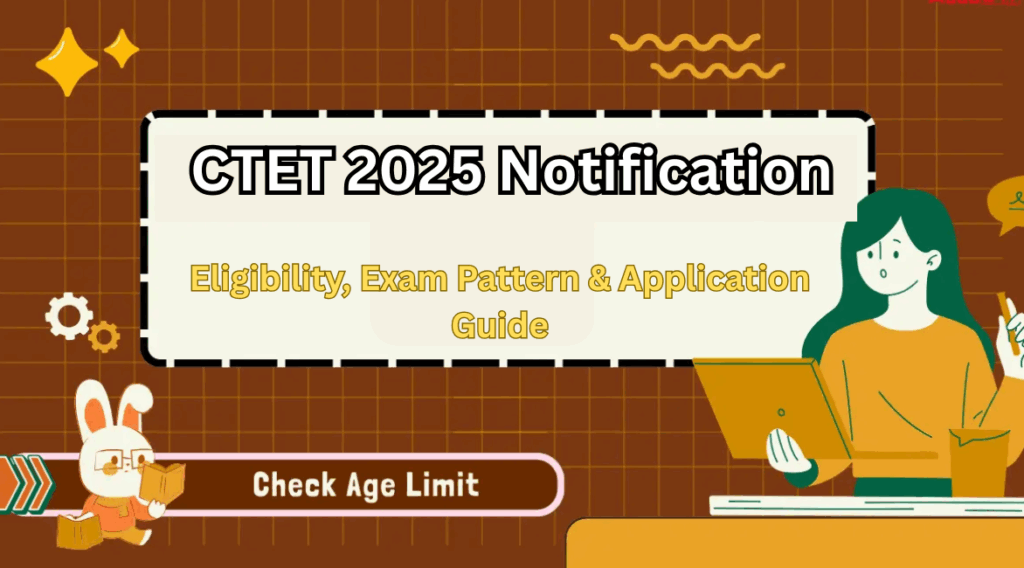In 2025, the way passengers buy train tickets is undergoing a significant transformation. Indian Railways, along with several international networks, is embracing AI-driven ticket pricing systems designed to make fares smarter, fairer, and more responsive to real-time conditions. These advanced systems leverage big data, machine learning algorithms, and predictive analytics to set ticket prices based on demand, timing, seat availability, and passenger behavior. The result is a pricing structure that optimizes revenue for railway operators while offering passengers more opportunities to secure affordable fares if they plan strategically.

Table of Contents
The Concept of AI-Driven Ticket Pricing

AI-driven ticket pricing in railways works on the principle of dynamic pricing, a model already widely used in the airline industry. Instead of fixed fares, ticket prices fluctuate based on multiple variables such as time of booking, train occupancy levels, seasonal demand, and even competitor transport modes. AI systems process vast amounts of historical and real-time data to predict demand patterns and adjust prices accordingly. This ensures that seats are sold at optimal rates, balancing affordability for passengers with profitability for operators.
Key Benefits for Passengers
While dynamic pricing might sound like it always favors the railway, in reality, it can be highly advantageous for passengers. Those who book early or travel during off-peak times often enjoy lower fares. The system also allows for more transparency, as passengers can see price trends and make informed booking decisions. AI algorithms can even recommend the best time to purchase tickets based on predicted price changes. This approach makes train travel more accessible for budget-conscious travelers while maintaining flexibility for those who prioritize convenience over cost.
How AI Predicts Demand
The backbone of AI-driven pricing lies in its ability to forecast demand accurately. Machine learning models analyze data from multiple sources including historical ticket sales, special events, holiday seasons, weather forecasts, and even social media trends. For example, if a major festival or sports event is taking place in a city, the AI system anticipates higher demand for trains to that destination and adjusts fares accordingly. Likewise, during periods of low travel activity, the system lowers fares to encourage bookings and maintain occupancy rates.
Integration with Passenger Apps
In 2025, AI-driven ticket pricing is seamlessly integrated into railway booking apps and online platforms. Passengers receive personalized notifications about price drops, upcoming fare hikes, and alternative travel options. Some systems also allow users to set price alerts for specific routes, enabling them to book instantly when the fare meets their budget. Integration with AI-powered travel assistants means passengers can get real-time advice on the most cost-effective way to travel, including multi-leg journeys that combine trains with buses or flights.
Impact on Railway Revenue and Operations
For railway operators, AI-driven pricing is a powerful tool for maximizing revenue without alienating passengers. By adjusting fares in real time, operators can fill seats that might otherwise go empty, especially in less popular time slots. Higher demand periods naturally generate higher revenue, while discounted fares during quieter times maintain steady passenger flow. This balanced approach supports both financial sustainability and improved service delivery, as consistent revenue streams enable reinvestment in infrastructure and passenger amenities.
Addressing Concerns and Challenges
Despite its advantages, AI-driven ticket pricing has faced criticism, primarily around fears of sudden price spikes and reduced affordability during peak travel periods. To address these concerns, many railway systems are implementing fare caps to prevent excessive increases. Additionally, discounted ticket quotas for students, senior citizens, and low-income travelers are maintained, ensuring equitable access. Transparent communication is key—passengers need to understand why prices change and how they can secure the best fares.
Case Studies and Implementation Examples
Several countries have already demonstrated the effectiveness of AI-driven pricing in railways. In the UK, the National Rail system uses AI to adjust fares on select routes, resulting in improved seat utilization and higher passenger satisfaction. In Japan, certain Shinkansen services use predictive pricing to balance commuter and tourist demand. India’s pilot projects on routes such as Delhi–Mumbai and Chennai–Bengaluru have shown promising results, with operators reporting both revenue growth and increased passenger bookings during off-peak hours.
Future of AI in Railway Pricing
Looking ahead, AI ticket pricing systems are expected to become even more sophisticated. Future developments may include integration with biometric identification for seamless check-ins, AI-driven loyalty programs that reward frequent travelers with dynamic discounts, and carbon footprint-based fare incentives to promote sustainable travel choices. As AI models evolve, they will be able to consider even more variables, from global fuel prices to real-time competitor fare changes, making the system increasingly responsive and accurate.
Passenger Tips for Getting the Best Fares
To take full advantage of AI-driven ticket pricing, passengers should adopt a few smart booking strategies. Booking tickets well in advance often yields the lowest prices. Traveling during mid-week or non-peak hours can lead to significant savings. Using official railway apps with price alerts ensures that passengers are notified immediately when fares drop. Lastly, being flexible with travel dates and times can open up opportunities for unexpected deals.
FAQs
How does AI-driven ticket pricing differ from traditional fare systems?
Traditional systems have fixed prices regardless of demand, while AI-driven pricing adjusts fares dynamically based on real-time data and predictive analytics.
Does AI pricing always make tickets more expensive?
Not necessarily. Off-peak and early bookings often cost less, and passengers can take advantage of strategic timing to find cheaper fares.
Are there protections against excessive price hikes?
Yes. Many operators set fare caps and maintain discounted quotas for specific passenger groups to ensure affordability.
Can AI predict ticket price changes accurately?
While no system is perfect, modern AI models achieve high accuracy by analyzing vast amounts of data and continuously learning from booking patterns.
Click here to know more.






